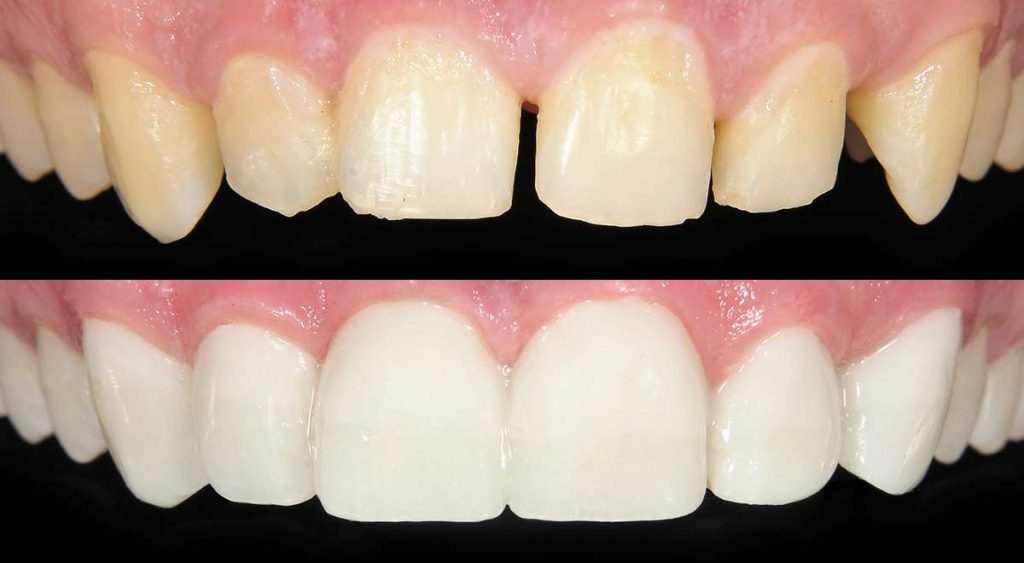When you think of a beautiful smile, you probably think of bright, white, straight teeth. Maybe your own smile doesn’t fit that description; but that doesn’t mean it never will. In fact, with dental bonding, you have one of the easiest, fastest and most affordable cosmetic dental treatments at your disposal. Dental bonding can repair stained, cracked or chipped teeth.
During a dental bonding procedure, a cosmetic dentist applies a tooth-colored resin to your tooth and then uses a special light to harden or “bond” the material to the tooth. It may seem simple, but the ability to bond restorative materials to enamel has, in fact, revolutionized your dentist’s ability to prevent and prepare cavities, as well as improve the overall appearance of your smile.
Dental bonding is commonly used to restore decayed, cracked and chipped teeth; improve the appearance of stained teeth; close spaces between gapped teeth; and change the shape of teeth.
Bonding vs. Dental Crowns and Veneers
Dental bonding, dental crowns and veneers are all cosmetic dentistry procedures that can boost your smile from average to brilliant. Bonding, however, is a less expensive, less complicated alternative to a dental crown or dental veneers.
Some dentists feel that dental bonding is best suited for small cosmetic changes, temporary corrections of cosmetic defects and teeth with little bite pressure (especially front teeth).
Another benefit of dental bonding is the time it can save you. Unlike veneers and dental crowns, which are custom-made in an off-site laboratory and require multiple visits to complete, a dental bonding procedure is performed in your dentist’s office and generally takes just one visit!
Dental bonding does have limitations, however. While the material used in dental bonding is somewhat stain-resistant, dental crowns have proven to resist stains better. Bonded teeth are also more vulnerable to chipping and breaking than dental crowns, dental veneers or dental fillings, so you should refrain from chewing on ice, pencils and your fingernails.
The Dental Bonding Procedure
The dental bonding process is a simple procedure that takes a dentist about 30-60 minutes per tooth to complete. The process is usually painless and is often performed without local anesthesia or sedation dentistry, unless the bonding is being used for a tooth filling.
First, your dentist prepares the tooth for dental bonding. Your dentist uses a shade guide to select a composite resin that closely matches the natural color of your teeth. Your tooth will be roughened up a bit and then a conditioning material is applied to help the resin better adhere to the tooth.
Finally, your dentist uses an ultraviolet light or laser dentistry to harden the resin. After the resin has hardened, the dentist may trim and shape the tooth as needed. The final touch is a little polishing to make sure the sheen of your bonded tooth looks just like the rest of your natural teeth.
How to Care for Bonded Teeth
Contrary to popular belief, there are no tricks to caring for your teeth — bonded or not. Good oral hygiene is all it takes. That means brushing at least twice a day, flossing at least once a day, maintaining a nutritious diet and visiting your dentist regularly.

